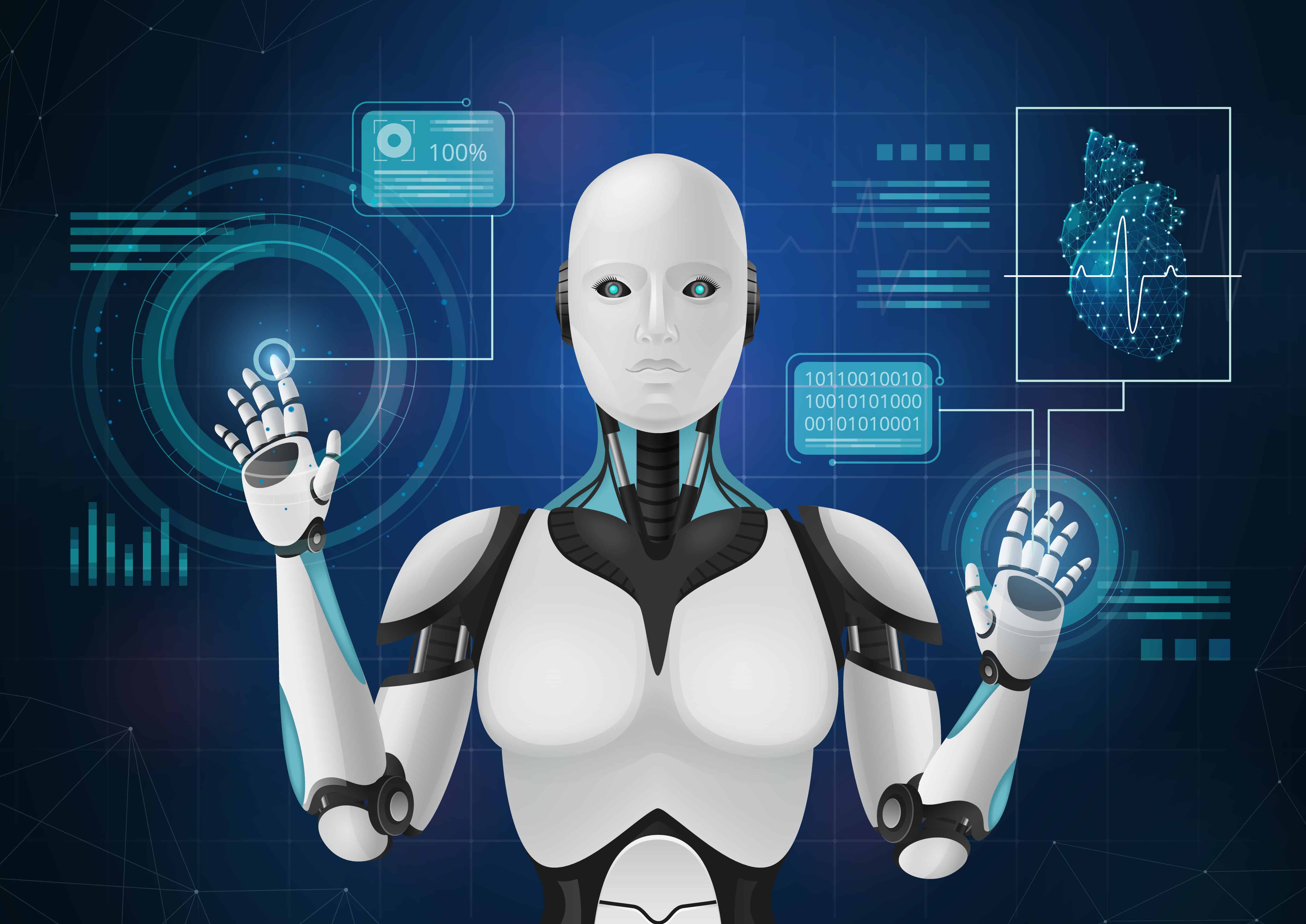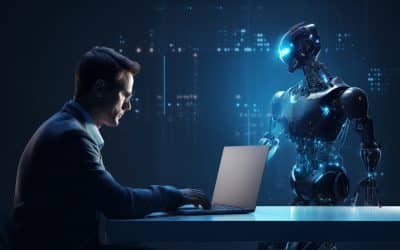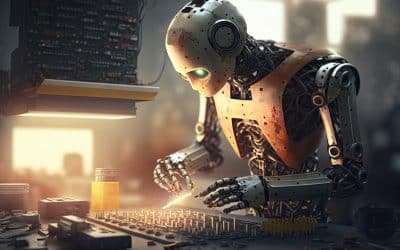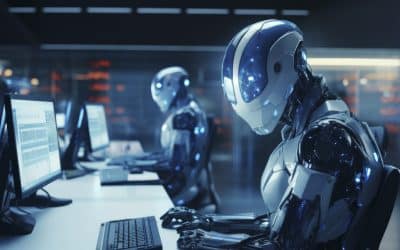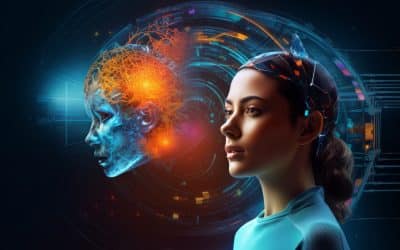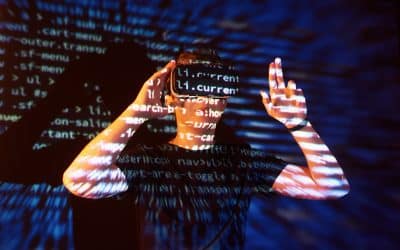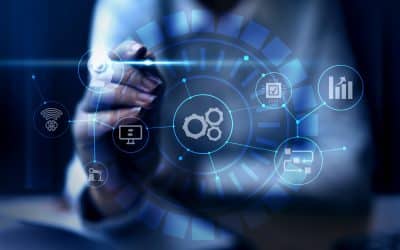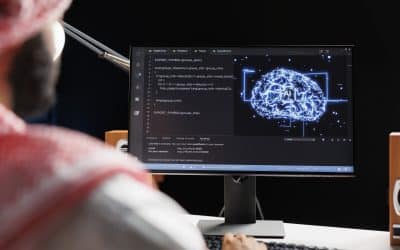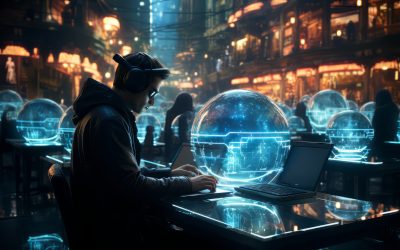As optical character recognition (OCR) becomes increasingly essential for businesses and organizations, many strive to automate and streamline their digitization processes. Companies should employ invoice automation or handwriting recognition software to increase accuracy and effectiveness; others utilize artificial intelligence technologies as part of this effort.
Machine-learning-based OCR allows for accurate Image Text Recognition such as posters, street signs, product labels, and reports using machine-learning technology. Extracted text comes in different formats like texts, words, and paragraphs—you may even come across digital text scans! OCR and ML solutions have quickly become popular technologies among businesses as their use exponentially grows. Businesses across industries increasingly depend on this combination to optimize performance in their processes.
This post will highlight OCR technology and how its uses may help address business challenges.
What Is Optical Character Recognition?
Optical Character Recognition offers numerous ways of viewing, locating, and even recognizing text – in the form of labels or images – on various documents. When thinking about OCR, it can quickly come to mind that many people want to lose essential documents that take up space on their desks and may cause legal complications if lost, which is why OCR can help, and digitizing papers is vital.
OCR Machine Learning refers to computer vision issues requiring handwritten or typewritten content from digital images to be transformed into computer-readable text for processing by your computer and then saving and modifying production using text file components of data entry programs.
Since the surge in machine training to recognize text, we have explored numerous techniques for using computer vision to solve OCR machine-learning problems. As more businesses implement machine learning software on an enterprise-wide level, robust models that adapt more readily are necessary.
How Does OCR Work?
An OCR device consists of both software and hardware. Its purpose is to analyze the content of a document and then translate the text into code utilized for data processing. Imagine this in the context of mail sorting and postal services. OCR is essential to their capability to rapidly process destination and return addresses, allowing them to sort mail quicker and more efficiently. This is accomplished in three stages:
Image Pre-processing
The first step is when the equipment (usually one that uses an optical scanner) converts the document’s physical structure to create an image, such as the image of an envelope. This step ensures the scanner will accurately reproduce the image and eliminate undesirable distortions. The image that is created is transformed into a black-and-white version. This is examined for light (background) and dark areas (characters). The OCR software can also classify images into distinct elements, such as tables, text, or image insets.
Intelligent Character Recognition
AI analyses the image’s dark parts to find characters and numbers. In general, AI targets one character (word, phrase, or chunk of text at a given time employing one of the following techniques:
- Teams train teams to train the AI algorithm with a wide range of text and handwriting formats. The algorithm compares the letters in the image of an envelope to those it already knows to find connections.
- New algorithms apply guidelines for specific features of characters to recognize them. Characteristics could include the number of crossed, angled, or horizontal lines and curvatures. For example, the letter “H” has two vertical lines and one horizontal line between them. The machine uses these feature identifiers to recognize the envelope’s various “H”s.
- When the machine recognizes the characters, they’re converted into ASCII code, which is utilized for other manipulative actions.
Post-processing
In the third step, AI rectifies any errors found within the document. One option is to instruct the AI using a particular vocabulary of words to be included within the file. The AI’s output should be restricted to those specific words/formats to ensure that the interpretations do not fall beyond the scope of the lexicon.
Benefits Of OCR Technology For Businesses
Below are a few reasons your company might be considering the possibility of implementing OCR technology:
More Efficient
One significant advantage of OCR is the ability to streamline the data entry process and Text Recognition AI, saving time and reducing the possibility of making errors. OCR software extracts information from scanned documents and inserts it into databases or a spreadsheet. This significantly benefits employees who spend extensive time manually entering data, allowing them to concentrate on valuable jobs.
Access To Information Is Improved
Another advantage of OCR is its capacity to digitally scan paper documents, making them much easier to keep, search for, and browse. This is particularly beneficial when dealing with vast quantities of paper documents daily because it removes the requirement to store them physically and makes it simpler to locate the required data. Additionally, it can enhance employee decision-making and enable them to find the data they need quickly and conveniently.
Accuracy Improved
OCR technology also improves text recognition accuracy. Recently, OCR algorithms have become more sophisticated and can detect text in various languages, fonts, and documents. This precision is crucial when dealing with documents containing significant or sensitive information since it ensures that the data can be easily accessed but also precise and trustworthy.
Security Enhancing
Apart from these advantages, OCR technology can also help improve the security of private documents. Electronic storage allows firms to lower the threat of data security breaches and protect against unauthorized access. This is crucial for anyone who deals with sensitive data daily, as it will help ensure that the data they store is safe.
Lower Costs
OCR will help companies cut paper storage, management, and processing costs. By digitizing documents, companies can reduce the need for storage facilities and save on shipping and printing costs.
Improved Customer Service
OCR is also an excellent tool for streamlining customer response times. This allows companies to answer customer inquiries faster and more accurately, increasing the customer’s satisfaction and loyalty.
Increased Assets Protection
Storing your data in physical formats like files and folders is essential, making the documents vulnerable to natural destruction, theft, or loss. After all of these documents have been changed to digital format and secured from theft, destruction, or natural disasters, you are protected from such threats. The backup of your files on the cloud or in geo-redundant data centers allows you to access these files through the DMS software from any device connected to Internet access.
In the event of cyber-attacks and other types of cyber-attacks that attempt to corrupt the stored data, additional layers of protection with sophisticated encryption can be employed to safeguard your data. Ensure that access restrictions are compatible with the regulations governing data and that your data will be secure.
Reduces Errors
Manual data entry requires large portions of processing documents that are susceptible to mistakes. Incorrect spelling, missing information, or document filing errors are all possible. Yet, OCR technology eliminates such issues for your business. Instead of manually labeling and indexing the documents, OCR converts them precisely, reducing the time spent on paperwork and helping you focus on the most critical tasks.
Supports Multiple Languages
There is plenty of information available in many languages, thanks to globalization. However, accurately capturing details in languages unfamiliar to us can seem daunting. But, OCR can simplify these jobs. AI-powered OCR technology can translate text into a variety of languages. It detects images and decides on the appropriate language, then transforms it into another based on your preferred language.
Lowers Turnaround Times
It is incredibly tiring to do the same thing over and over again. Automating your work can save time and OCR. Utilizing this innovative technology to capture data can remove manual tasks, streamline the daily management of documents, and reduce time. In addition, optical character recognition can be instrumental in filling forms. OCR recognizes the information in documents and stores it to be used later to speed up form filling or sending emails.
Top OCR Business Use Cases
OCR applications in the business sector have various possibilities. Because text recognition utilizing machine learning is more accurate than previous models of optical character recognition, the business owner can develop OCR solutions for a wide range of issues in the business. The most modern OCR technology is used for banking, security, insurance, medicine, retailers, communications, and other sectors.
The most common uses for OCR technology are examining test answers, instant translations, recognizing signs on the street (Google Street View), browsing through images (Dropbox), creating documents for AI data analysis, and many more. Security agencies frequently use OCR. The technology examines and analyzes documents like the driver’s license or ID to confirm an individual’s identity. Each time, a distinct OCR method is employed.
OCR In Healthcare
OSR instances in the health industry are linked to data management. Digitizing medical documentation and successfully extracting information from it is essential to a healthcare facility’s operations.
Utilizing the optical character recognition technique, hospitals can convert papers to a digital format faster and then save them in PDF documents that are easily searchable using keywords. Electronic medical records address one of hospitals’ biggest problems: the lack of information regarding patients’ medical conditions.
Furthermore, OCR allows data to be retrieved from test results or certificates and then sent to hospitals’ information management systems (HIMS) for inclusion into the patient’s records, thereby creating patients’ complete medical history. Pharmaceutical systems may also use OCR. With an OCR module, these systems let users read prescriptions for medical use. Also, they can be uploaded to software to check the medication’s availability in pharmacies’ databases or utilized to regulate the selection of robots.
OCR technology is also utilized for people who have vision impairments. When you scan the text on the photo, it is possible to use the OCR system, which gives you the basis to use speech-to-text technology. The only thing you need to do is to scan the text to receive artificial speech output. For example, the Voice Speech Scanner application uses the camera on your smartphone to take an image with text and can then read the words in return.
OCR In Financial Services
Financial transactions require extensive information entry, which can take considerable time and energy to process manually. Likewise, digitizing financial documents and extracting relevant information with OCR helps make business processes more efficient. Ultimately, OCR technology helps improve customer onboarding and overall customer experience.
OCR applications in the financial and banking sectors include:
Onboarding Of The Client
Whatever financial transaction you’d like to conduct, whether it is opening an account, withdrawing money, or moving funds, first, you need to verify that you are who you say you are. OCR technology offers a completely automated process of onboarding that involves scanning the identity document; then, all the required details are extracted using OCR (e.g., date of birth, name or marriage, gender, photograph, signature, etc.) and verified with the signature. As an instance and checking it. For example, the OCR engine can check at any time if the given signature aligns with the document’s signature, proving identity.
Pay With a Scan Feature
Manual entry of payment information could be better, but it can take longer than anticipated. Scan-to-pay utilizes optical character recognition technology to capture the invoice information and process it automatically and quickly. All you need is an iPhone camera for this (for instance, you could have to snap a photograph from your credit card). OCR could also be used as additional security for making transactions. Most often, cardholders store details in applications without inputting the card’s number or other information each time.
Receipt Acknowledgment
OCR lets you automate data extraction from receipts to facilitate analysis, accounting, or archive analysis. It is integrated into financial assistant applications, including money-tracking components, to automate data entry for expenses and expense categories. Expensify is a prime instance of such a program.
One of the biggest obstacles to accuracy in receipt recognition by OCR is the wide range of variability and frequently poor quality of receipts. When this happens, rules-based approaches will not work, and that’s the point where optical character recognition using deep learning can help. Deep learning’s approach to OCR lets the system learn from the data received and improve. This technique allows an algorithm to recognize areas of significance in images that likely include text and remove irrelevant data like background.
Processing Of Loans
OCR and Machine Learning Text Recognition can speed up mortgage and loan application processing by as much as 70 percent. Automating data entry makes reviewing applications and approving or denying them much quicker and more efficient for businesses. AI algorithms can analyze the necessary information from an application to decide if it should be accepted or not according to the bank’s guidelines.
OCR applications in finance aren’t restricted to these examples. OCR technology is also used to read other financial documents, such as invoices, contracts, bills, and financial reports.
OCR In Retail
Utilizing OCR coupled with machine learning, retailers will rapidly improve internal processes within their business and enhance customer experience by making the most of the available data. For example, they get valuable insight from purchase order data to design more efficient advertising campaigns and promotions and better manage prices. When they convert receipts and invoices to digital formats and then integrate the data into accounting systems, businesses in the retail industry can streamline the accounting process.
Implementing OCR is an excellent method to manage the massive demands of retail employees. By automating information entry and data extraction, workers need to confirm to get the best outcomes manually. Examples of the use of OCR in retail are more comprehensive than those mentioned above.
OCR’s text recognition capabilities could address specific issues for retail businesses. In particular, it benefits wine retailers that offer many different products. Through OCR-based recognition for wine labels, it is possible to take an image of the wine label and obtain product information like descriptions, reviews, and other information. For them to make the best decision.
OCR In Security And Law Enforcement
Nearly every industry can make use of OCR to enhance security strategies. Organizations can develop advanced authentication and verification methods using OCR supported with machine learning. In general, manual comparators that include personal information and selfies are employed to confirm the authenticity of the ID provided by the user. OCR eliminates these manually-based efforts by scanning ID cards, driver’s licenses, passports, and other documents and confirming their authenticity compared to information stored in the database.
In this scenario, the OCR engine must first identify the document type. If, for instance, an individual chooses to authenticate using a driver’s license, then the file they upload to the system has to be in that document’s format. The system will then examine and analyze uploaded documents to gather relevant information.
As documents of the exact nature may differ in style based on the nation and state of origin, a system must be able to locate and collect the required information from any variation. Deep learning algorithms can help the OCR system understand the relation between different text blocks. They also allow for combining semantically linked chunks of text to discover pertinent information such as names and dates of birth.
Also, it is essential to note that security-based authentication OCR software must have security features that prevent attempts to spoof when scanning documents. Anti-spoofing strategies can assist in the detection of false ID scans and illegal attempts.
Limitations Of OCR Technology And Their Solutions
Optical character recognition (OCR) is a trendy technology, but it does have some drawbacks, mainly when we speak about traditional systems for AI Text Recognition. Combining OCR with deep learning and computer vision enhances the accuracy of OCR for many situations. However, it’s essential to realize that it’s not possible to get 100% performance and that more software is required to boost the results.
The main limitations in optical technology for character recognition include these:
Lower The Quality Of Image Resulting In Lower Quality Of OCR Output
The most common OCR mistakes include misreading letters and letters that need to be more readable or mixing text in adjacent columns. Common ways to normalize an image involve moving and aligning the image, removing blur, and applying filters. You can also remove items that do not contain character elements (like tables and separator lines).
Complex Image Background
Small lines or sharp edges that compose the background could be read as characters, which can alter the result of recognizing text. To overcome the issue of noise-related presence, including lines, dots, or stains. In the background, modern OCR techniques employ computer vision algorithms trained using augmented datasets.
OCR Performs Better When Printed Text Than Handwritten
Handwritten fonts come in a variety of different variations. This can make the process of recognizing text. The software team must develop the OCR model with advanced algorithms for deep learning and computer vision systems to recognize handwriting. The high-quality dataset used to train the model is a factor that affects the accuracy and speed with which results are produced. It’s best to utilize smaller amounts of data, but only the most useful ones.
Trends In OCR Technology
With the development of AI and machine learning, we’ll likely change the role of OCR software. Instead of being just scanners, OCR tools may grow to become analytical tools or something more substantial. This section outlines essential trends to be aware of if you plan to use OCR tools in the coming several years.
OCR Will Have Mobile Devices
Present OCR scanners and sensors are separate devices with limited features. If OCR software is shifted onto mobile devices that each dock worker comes with, functions such as instant data capture in the moment of need will become more readily available. There are already optical character recognition applications that read images. However, the broad usage of instant-check OCR scanners for logistics has yet to be seen.
OCR Can Be Combined With Augmented Reality
Augmented reality can streamline many procedures in the logistics chain. In particular, the OCR scanner can be more effective in diagnosing damaged boxes, more so than the human eye. Imagine that the OCR scanner not only alerts an injured area using a text message. It also displays the real-life image of the box with the damaged part highlighted in red and a supporting text that includes instructions hanging above. The technology is being utilized in logistics. However, its potential has not been explored thoroughly. However, we anticipate new OCR and AR applications will be available soon.
OCR Is Expected To Become An Element Of The Industrial Metaverse
Discussions about the emergence of industrialization in the metaverse have been hot. Virtual fairs for industrial production represent the first step in creating a transition in this direction. Virtual replicas of massive objects like vessels, extensive equipment, containers, and so on will be sold at such fairs. OCR tools will be integrated within these systems for a myriad of reasons.
OCR Is Expected To Become More Precise Due To Its Integration With Deep Learning
The current optical character recognition software uses matching algorithms to match characters. The algorithms rely on patterns from the past. As technology advances, deep learning techniques and OCR devices will begin to comprehend the meaning behind the words. With deep learning, OCR can recognize characters that appear incongruously similar or comprehend ambiguous writing.
OCR Is Expected To Become More Sophisticated
New steps after optical character recognition include intelligence-based character recognition (ICR) and intelligence word recognition (IWR). Technology can help us comprehend words and images more efficiently and speedily. Together, they’ll be the next stage of AI for logistics and supply chain. They will also bring innovative tools like multilingual OCR to scan texts across multiple languages and recognize blurry images, obscure alphabets, and Arabic fonts.
Conclusion
Optical Character Recognition (OCR), built upon AI and machine learning, is widely used for recognizing text and digitizing documents. While OCR isn’t yet 100% accurate, its usage is growing due to the advancement of deep learning and computer vision. Nowadays, at least one kind of OCR is utilized for communications, retail health, finance security, tourism, and other fields.
The defined business objectives significantly influence the strategies, architecture, and tools for designing OCR software. Data should be in line with the purpose of the project and should be as authentic as possible. Making an efficient OCR solution using machine learning isn’t an easy job. Therefore, it is recommended that you seek the assistance of knowledgeable AI consultants to ensure that you correct your data.
Frequently Asked Questions
What is OCR?
How does OCR work?
What are the benefits of OCR technology for businesses?
What are some OCR business use cases?
What are the limitations of OCR and their solutions?
OCR can be limited by low-quality images and complex backgrounds, and it struggles more with handwritten text. However, solutions like image normalization, noise reduction, and advanced algorithms for handwriting recognition can improve its performance.
What are the trends in OCR?
Current trends in OCR technology include integration with mobile devices, applications in augmented reality, becoming a part of the industrial metaverse, increasing precision through deep learning, and advancements in intelligence-based character and word recognition.

